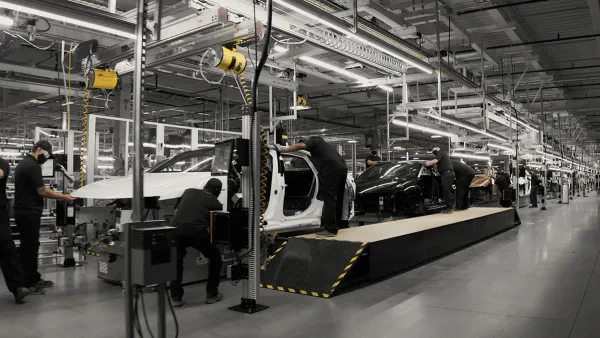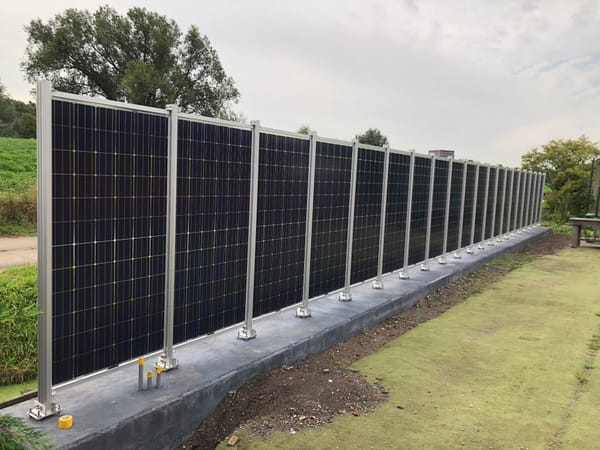When it comes to carbon capture, our backs are against the wall
Good Afternoon,
If you haven’t already, start thinking about carbon capture. It’s going to become a major part of our economic lives. One way or another we’re going to have to start paying for it – and the cost will be in the trillions of dollars a year.
Today I talk a bit about how carbon emissions will have to be removed from the air, and that we’re going to have to pay to do it, sooner rather than later.
-Mike
Thank you for reading Heat Rising. This post is public so feel free to share it.

Let’s say for instance that everyone in the world agreed today that we needed to become a green economy, immediately stop using fossil fuels, reduce our consumption of methane-producing herd animals, and stop cutting down the world’s forests. That would be great! But still, even then, we’d have a big carbon problem since we’re already beginning to experience the results of a changing climate, and studies show that the impact of carbon emissions takes ten to twenty years to manifest. So, we’ve still got to deal with what we did twenty years ago.
But since we’re not going to a green economy cold turkey, it’s likely that we’ll need decades to stop using fossil fuels. And because we haven’t agreed on a fossil cut off date, the days of true “green only” energy are probably many years of carbon-spewing away.
What we need is a method to suck that carbon out of the air, and the solution that’s on every policymaker’s lips is Carbon Capture and Sequestration, sometimes called Direct Air Capture.
The basic idea behind CCS is that someone basically operates a big vacuum with a ton of fans, that sucks air into a chamber, then separate carbon-dioxide (CO2) from the atmosphere with chemical reactions. That CO2 is then pumped deep underground, possibly into an old oil or natural gas well, where it’s stored, like oil or natural gas, for tens of thousands of years, or maybe forever. But basically on a geological time scale, so that the globe’s climate can readjust to less CO2 in the atmosphere, and we can get back to living like we used to, or at least with less dramatic change.
There are modifications to this CCS plan, such as capturing methane and CO2 from oil and gas wells, then pumping it underground. Or capturing those gasses from a power plant, ethanol plant, or natural gas-fueled fertilizer plant, then pumping them underground. Generally though, the power, ethanol, and fertilizer plants would require someone to ship vast quantities of CO2 to where the appropriate holes in the ground might be, basically by using underground pipelines, much like we use for moving oil and natural gas.
The thing about CCS is that it’s still a largely unproven technology. Not that it can’t be done, in fact there are slightly more than a dozen of operating CCS facilties around the world. But each of these suck out maybe a few thousand tons of CO2 per year, when we need to be pulling out many hundreds of billions of tons for decades. If we’re going to make a dent in the problem we need many, many more CCS facilities.
There’s also a number of questions about the dollar cost of CCS. Right now, CCS facilities cost as much as $350 per ton of CO2 removed to operate. Proponents expect that as CCS scales up and technology improves, the cost could lower to $100 or $50 per ton, which is still a large number when you consider that in 2021 the U.S. emitted 6.3 billion tons of CO2 equivalents. So, just to take care of one year of U.S. damage at $100 a ton, we’re talking about $630 billion. And since the biggest CCS plants right now take in 4,000 tons a year, we’d need 1.5 million of those plants operating just to undo one year’s worth of U.S. damage. That’s a lot of scaling up.
There’s also the pipeline problem. While the idea of a leaking or exploding natural gas or oil pipeline sounds terrifying, a CO2 pipeline leak would be silent and potentially more deadly, since CO2 is a clear, inert gas that’s heavier than air so it tends to move downhill, pooling on the ground, potentially choking humans and animals to death. There have already been CO2 pipeline ruptures, killing some and sending dozens to the hospital. A number of companies are proposing reusing large, old natural gas pipeline networks in reverse, pulling CO2 from power and ethanol plants, and then injecting the gas into old oil and gas wells. The pipelines are meeting fierce local resistance, as residents fear silent asphyxiation from leaks.
But scientists are telling us we don’t have any other solutions at hand. We can’t grow enough trees to suck up all the carbon, because there’s more carbon in the air than all the biomass in the world could consume. The oceans, the world’s other massive carbon sink, are already showing signs of acidification from too much CO2.
So, it seems our backs are against the wall when it comes to adopting CCS. We can either throw our hands up in the air, or get to work building millions of CO2 vacuums and then pushing it into the ground for some other civilization to deal with it, eons from now.
Looking at the options, the Biden Administration has so far invested $12.2 billion in CCS, and recently it announced that to kick start the development of new CCS facilities, it will buy CO2 from the facilities directly. The expectation is that fossil fuel plants regulated to have no net CO2 emissions by the EPA will become the second set of CCS customers, after the federal government. But ultimately, nobody is going to want to pay to remove their CO2 emissions from the air, so we should count on the government – and governments around the world – creating some sort of CO2 charge for every energy expenditure we make. This is the only way we can possibly come up with the trillions of dollars we’ll need to spend globally on annual basis to pay for removing all the carbon already out there.
Looking at the cost and scale required makes CCS seem like an unreasonable, and insurmountable problem. But another way to look at it is that it’s like rocket science in the early 1950’s, long before Sputnik in 1957, and even longer before landing on the moon in 1969. It’s a technical – and societal – challenge we just need to figure out.
Other Things Happened
- A group of teens won a lawsuit in Montana that would halt new fossil fuel power plant development. The suit was based on the state constitution’s language protecting “the right to a clean and healthful environment…for present and future generations.” The GOP attorney general is expected to appeal the ruling to the state supreme court. A similar case brought by kids is pending in Hawaii.
- The GOP wants to plant a trillion trees to fight climate change. Trouble is, there aren’t nearly enough nurseries to create that many seedlings.
- Supply chain bottlenecks, market protectionism against Chinese products, and increased financing costs have caused solar and wind power costs to rise for the first time after decades of declining costs.
Welcome to the end of the newsletter. Here’s a field guide to local hot dogs. The Seattle Dog is an abomination.





